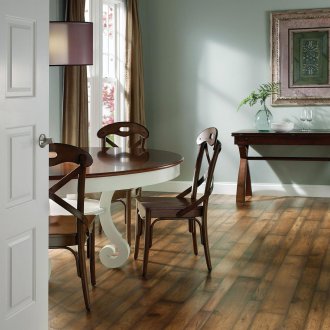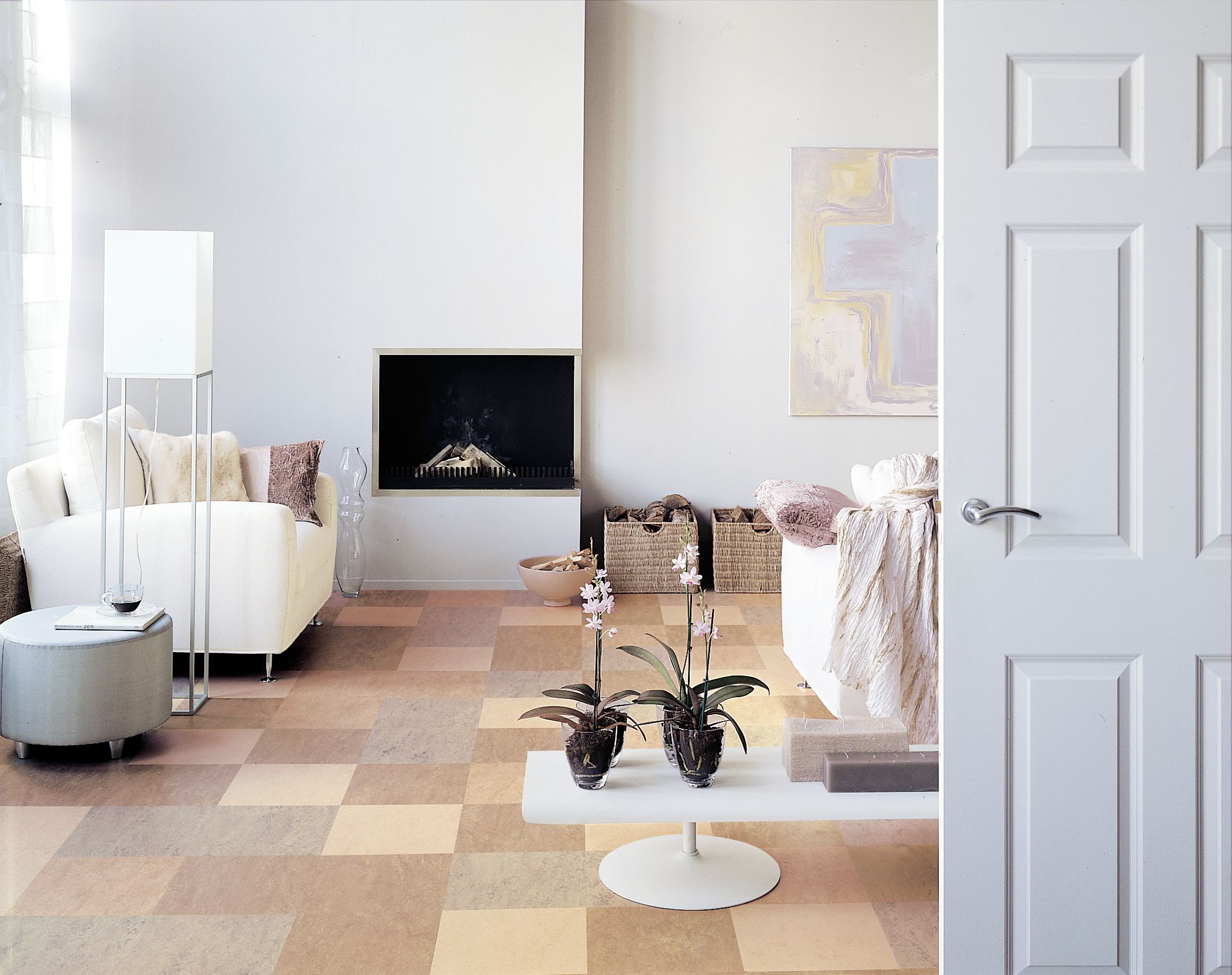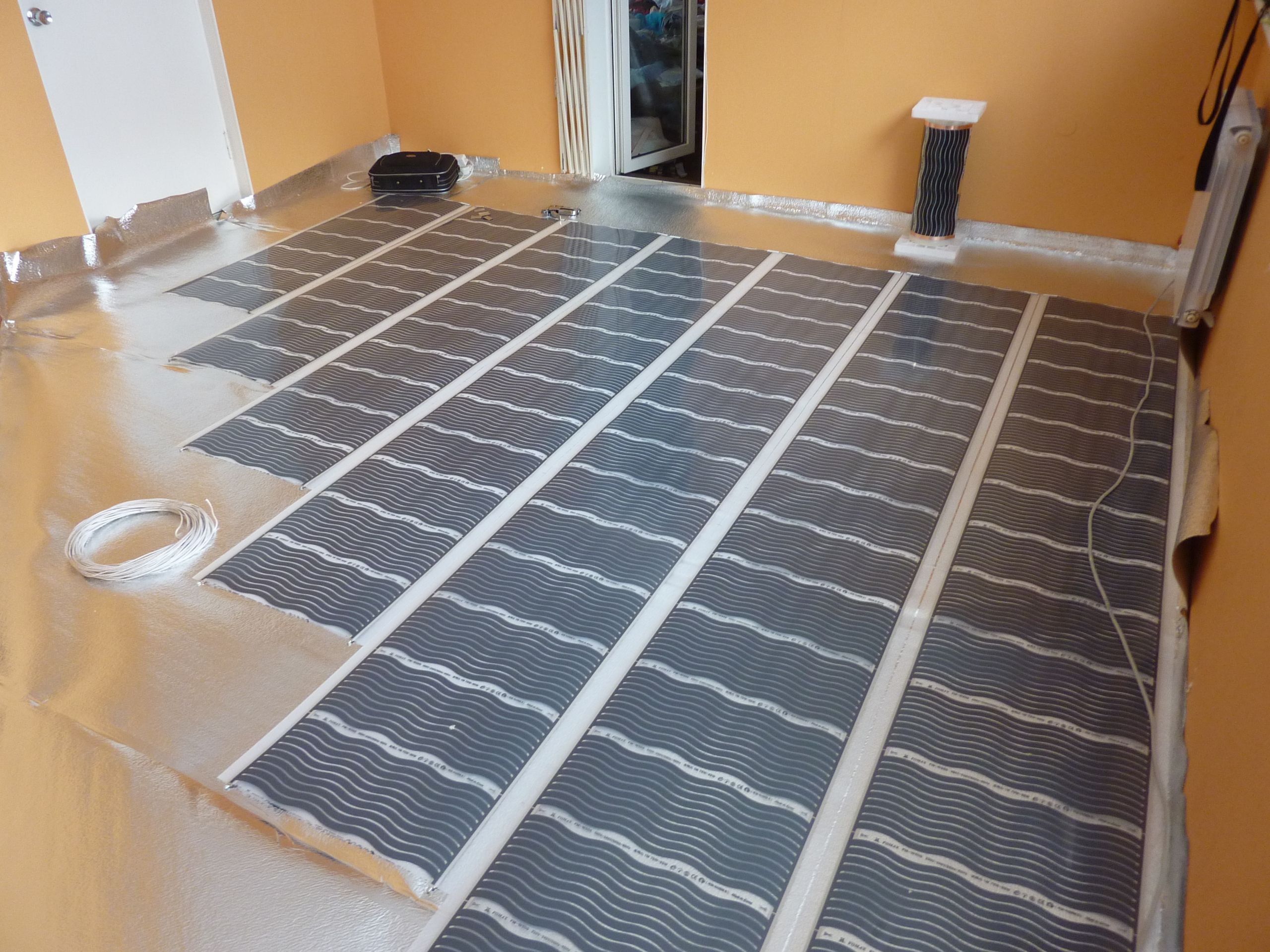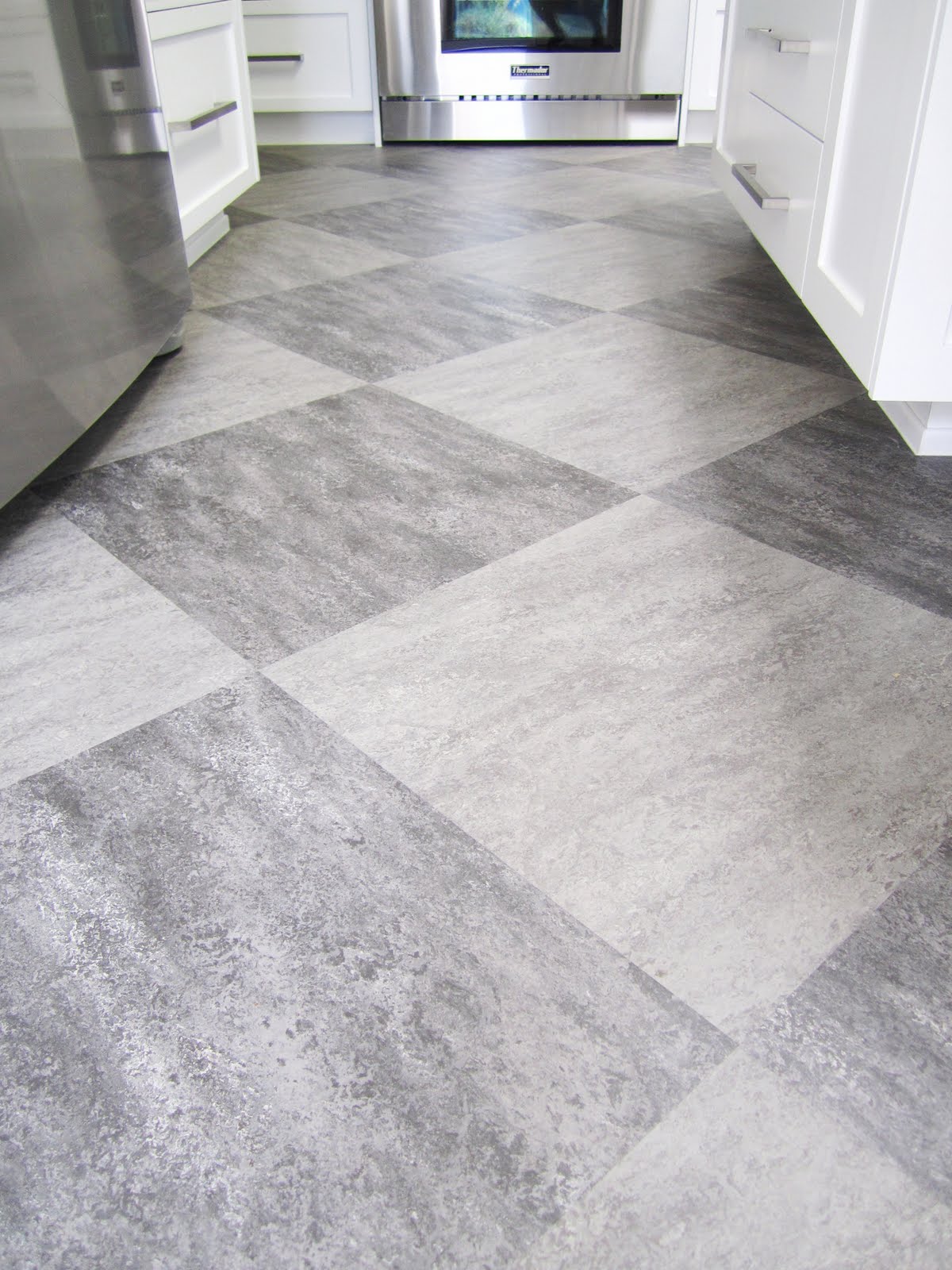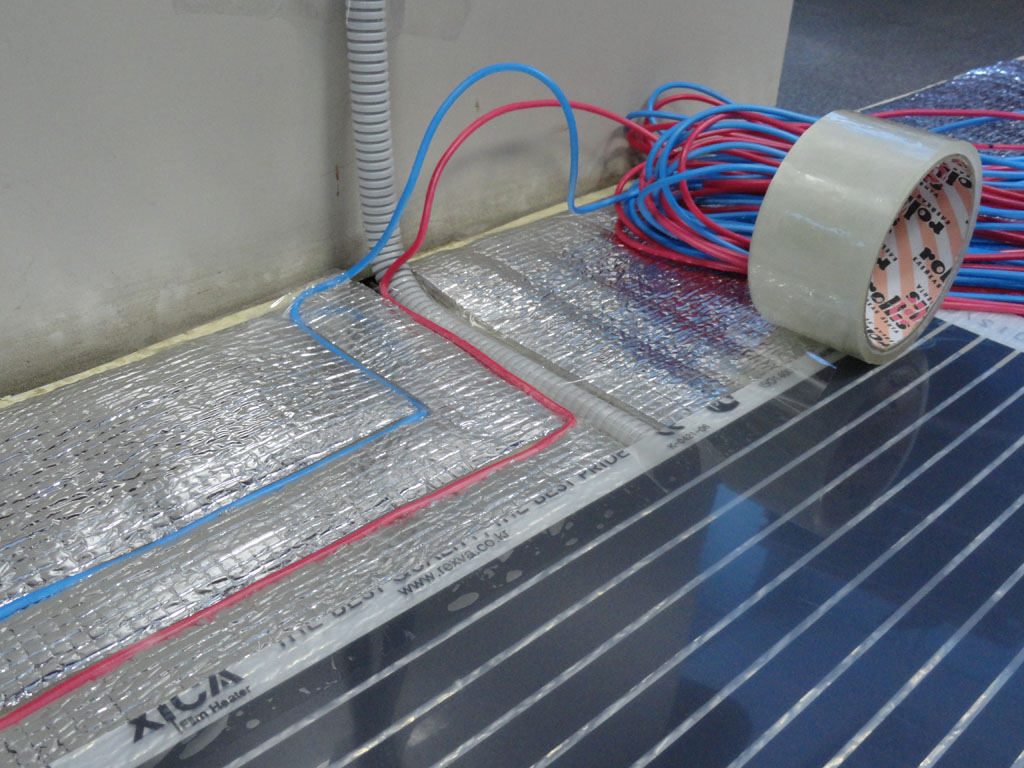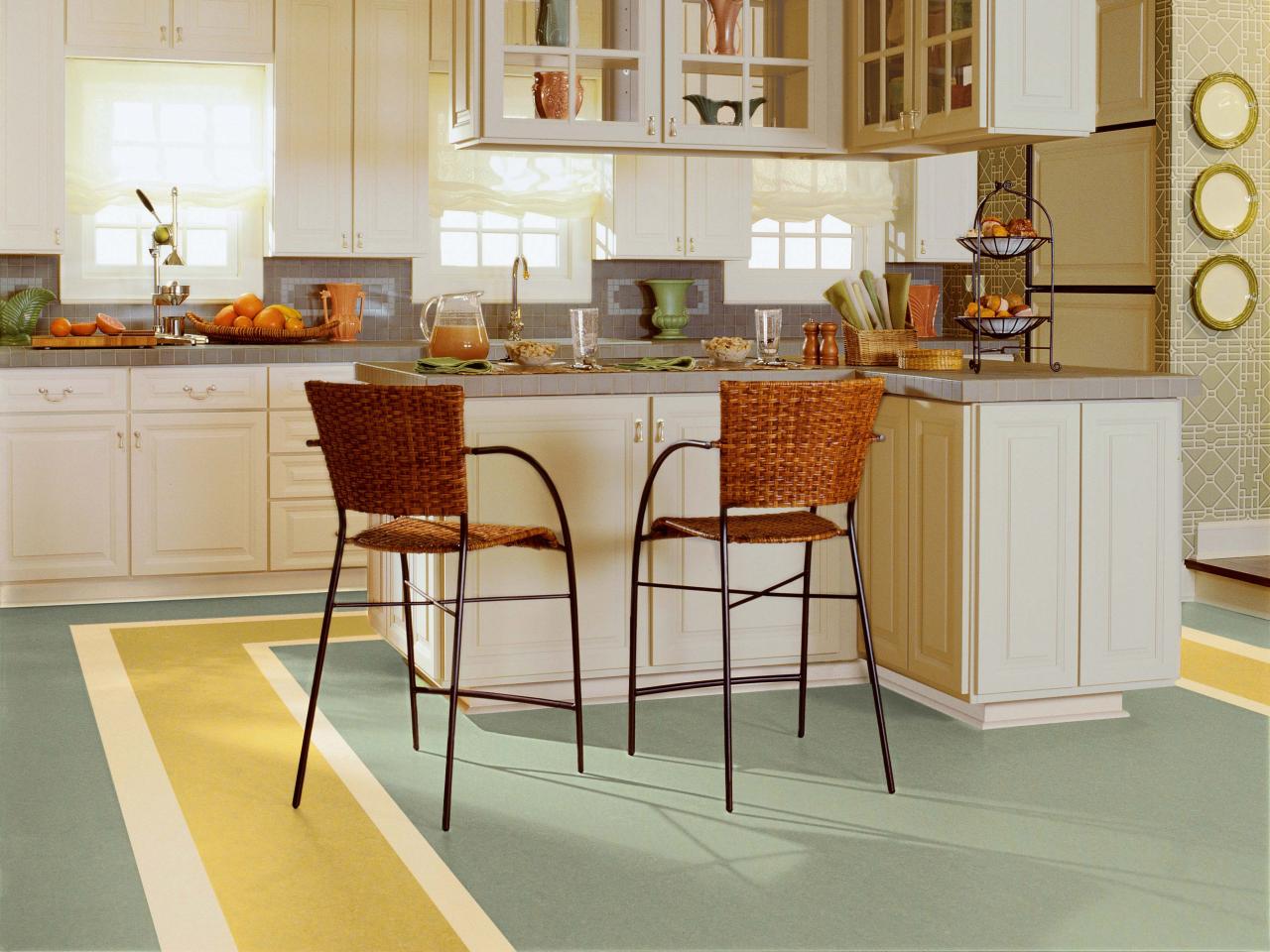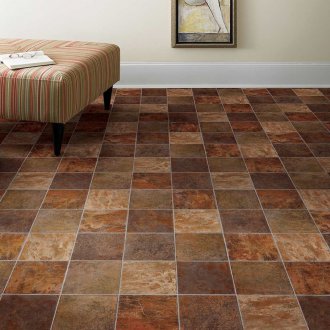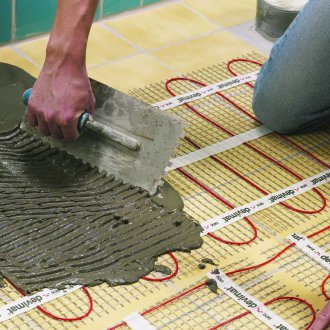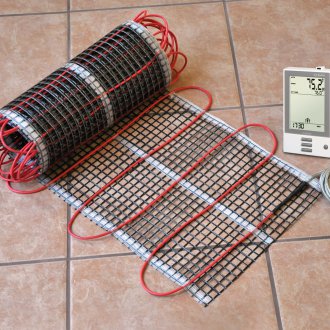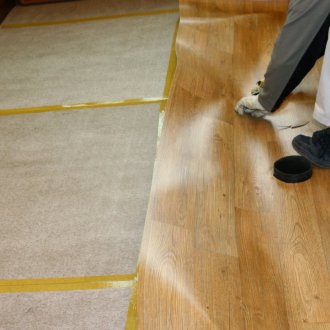We install a warm floor under linoleum: noticeable advantages
Content
Linoleum is the most common material for flooring. Its low price, practicality, ease of care attract customers, despite the existence of serious competitors - laminate and parquet.
If you plan to install underfloor heating, then you need to choose the right linoleum. Perhaps, at first glance, it seems that the whole linoleum is the same and differs only in design, but this is not entirely true.
Types of linoleum
There are several varieties of this flooring. Some options are suitable for living quarters, while others are only suitable for storage. Not only the design of the apartment, but also the safety of all households depends on choosing the right linoleum.
So what types of linoleum are:
- Based on polyvinyl chloride. This linoleum is one of the cheapest options. However, due to too high temperature conditions, it can be deformed, so the heating temperature should not exceed +27 degrees.
- From natural materials. The composition of this flooring includes environmentally friendly components, for example, flour, resin, lime. This linoleum can be spread out for use in the bedroom, living room, children's room.
- Rubber linoleum. Two-layer material made of rubber. Suitable for use in garages or storage rooms. In residential buildings, it is not suitable for use due to harmful fumes.
- Gliftal. The fabric-based surface is coated with a special varnish. Great for arranging warm floors.
- The warmed linoleum. It has low thermal conductivity, so it is not recommended for use on underfloor heating.
Types of underfloor heating
The system of warm floors can be divided into two main groups:
- Water;
- Electric.
In the water system, the source of heat is hot water, which flows through pipes under the linoleum. Installation of a water system is time-consuming and expensive to install. Also for water floors, a prerequisite is the purchase of a gas boiler. In apartments, underfloor underfloor heating is rarely installed, and for private houses it is a great option!
One of the main advantages of a water heating system is its durability. The service life of modern pipes is at least 50 years. In addition, such floors are safe and environmentally friendly. Due to the presence of a thick layer of screed over the contour, the system does not warm up too much. Therefore, this type of heating can be used even for a children's room.
Electric underfloor heating, unlike water systems, is easy to install. Electrical systems are divided into the following groups:
- Infrared (film);
- Rod.
Film underfloor heating
Floors with an infrared type of heating are good in that they are suitable for any type of floor coverings, including linoleum. If you plan to install a film underfloor heating under linoleum, you should first find out what it is. It consists of thin strips of carbon deposited on a film. Carbon floors themselves are very narrow, so they become indispensable in rooms where there is no way to raise the floor level.Even if one of the sections becomes unusable for some reason, the remaining parts will continue to operate normally. By installing an infrared warm floor under linoleum, you can do without screed.
The film for infrared floors (IR floors) can be continuous or in the form of a strip. When mounting such a film under linoleum, it is better to use the solid version. The fact is that linoleum is not a very dense material. And if you choose not a continuous film, then under your feet you will feel irregularities, which will cause discomfort to the owner of the house or apartment. It is believed that it is the infrared warm floor under linoleum that is best suited for apartments and cottages.
Laying infrared underfloor heating under linoleum is carried out on a completely flat and dry surface. In the presence of irregularities, such a warm floor will deliver a lot of inconvenience. He will look ugly and cause inconvenience when walking.
Cable floor heating
As the name implies, in cable underfloor heating, the main heating element is cable. It can be single-core or two-core. The difference between them is the presence of one or two heating elements. It is easier to install a two-core cable, but the price is more favorable for a single-core heating element.
The main advantage of cable underfloor heating is the ability to install both in the screed and under the finish. However, this system also has disadvantages. For example, if the cable is damaged, the system completely stops working, and if repairs are not done on time, the apartment or house may be left without heating. This is a very unpleasant moment that can ruin the whole impression of such a modern and technological system.
Installation of underfloor heating under linoleum is most often performed in houses, apartments and cottages as additional heating to central heating, but there are cases where such a floor is the main source of heat, for example, in a country house or in a country house.
Core floor heating
In the rod system of floor heating, the main heaters are rods that increase the temperature not of the air in the room, but of objects on the floor. The rods are carbon, silver and copper. As with the installation of a film and cable system, you can not do without a thermostat and a floor temperature sensor. If they are not installed, then the heating elements will work continuously at the same power.
Due to the good level of heat transfer, the laid floor with core mats can be used not only as an additional heating element, but as the main source of heat in the house.
The core floor has several disadvantages. Firstly, the prices for it are quite rather big. Even the most advanced film floors are cheaper. Secondly, it is quite difficult to install underfloor heating under linoleum with your own hands, especially for a person who is not versed in electrics.
Warm floor under linoleum on a wooden floor
Warm floor under linoleum on a wooden floor requires a lot of effort and energy. When pouring concrete, it will be necessary to strengthen the power screed. After solidification, a base is formed that will last for many years. It retains heat well and does not allow moisture to pass through. When performing installation work, you should find out whether the building can withstand such loads.
For a wooden floor, it is better to use infrared or water floors, since they do not overheat wooden structures. Due to the small thickness of the structure, such floors can be installed in a room with low ceilings.
Warm floors can be laid both on a new and an old wooden base. For the effective operation of the future underfloor heating, the foundation must be carefully prepared. Remove all cracks, roughness, clings.
Before you lay linoleum on such a floor, you should leave it indoors at room temperature for 2-3 days.Then spread out (do not fix!) And turn on the warm floor. The material is laid down in this state for another 24 hours and only then can it be fixed.
Undesirable consequences
It happens that the warm floor is not properly laid. It may happen that when laying underfloor heating power exceeds the permissible values. Under the influence of high temperatures, linoleum can deform, swell and become unpleasant in places with increased heating power. The worst option may be the release of the harmful chemical phenol, which is dangerous in a poorly ventilated area for small children and animals.
If this material is heated strongly, it becomes soft and elastic, which leads to cracks and tears. To prevent problems with this flooring, just touch it with your hand. Linoleum should not be too hot and have an unpleasant smell.
DIY floor heating
Laying a film underfloor heating under linoleum, as well as cable or water, requires compliance with a number of recommendations.
- Since the surface often has irregularities, a screed is made to level the floor.
- Next, put any hard coating: plywood, chipboard, gypsum sheet, cork substrate, cross-linked polyethylene foam, polystyrene foam.
- Thermal insulation material spreads next. To make it lie flat on the floor, you should fasten it with self-tapping screws or anchors.
- The laying of the warm floor itself.
If linoleum is already selected, then you can proceed with the installation of a warm floor. To install a warm floor under linoleum with your own hands, first of all, you need to prepare the materials that will be needed in the process: thermal film, temperature regulator, plastic film, heat-reflecting material, adhesive tape, scissors, pliers and a screwdriver.
The first step is to prepare the foundation. The plane must be aligned. A cement-sand mixture is perfect for screeds. The surface should remain flat, without protrusions of more than 2-3 mm. When the screed is dry, waterproofing material, OSB sheets and plywood are laid on it. If the floor is placed on concrete floors, it is recommended to fix it with dowels.
It is also necessary to determine the place where the thermostat (thermostat) will be located. This is usually the area on the wall next to a power outlet or switches.
If you have bulky low furniture, then you should think carefully before laying warm floors in your home. Due to the weak movement of air from such a floor will be of little use. In addition, elevated temperature has a bad effect on the condition of the furniture. It is drying up and quickly deteriorating.
Even 20 years ago, many in our country did not hear about the system of underfloor heating. Now this modern technology serves as an additional source of heating, and in some houses it completely replaces radiators and batteries. According to the laws of physics, heat from the floors rises, evenly warming up the entire room. With the help of a thermostat, you can lower or raise the temperature in the room, making it comfortable for households.
Do-it-yourself installation of a warm floor is not at all difficult! The main thing is to approach installation work responsibly, not to save on high-quality materials and equipment. If you don’t have the desire and time to tinker with this rather laborious process, you can always turn to professionals who will easily take on all the work!

